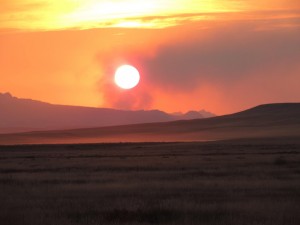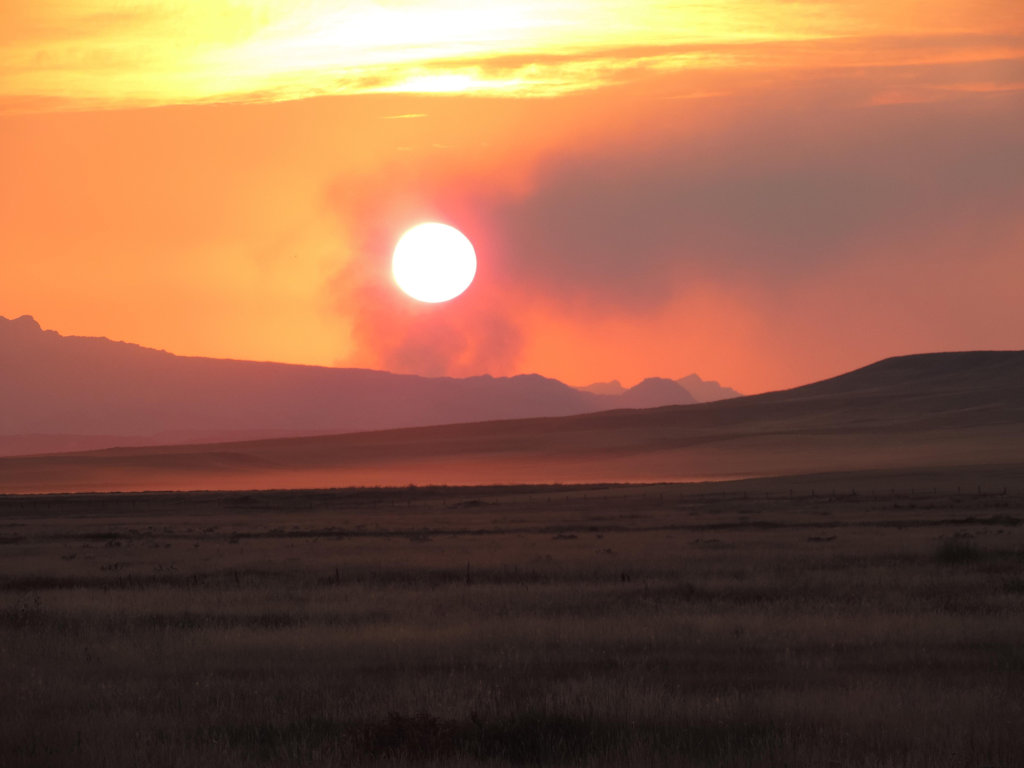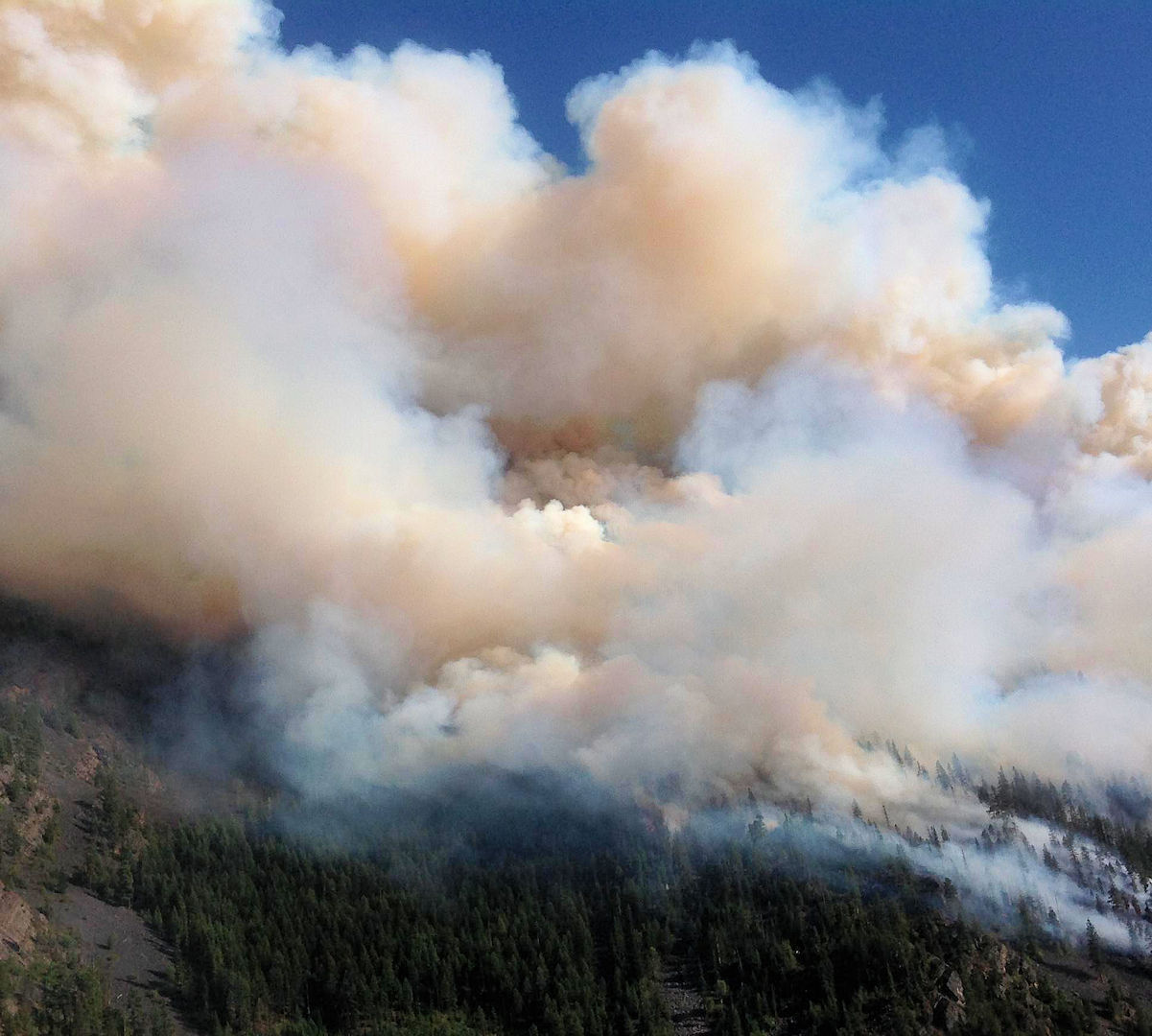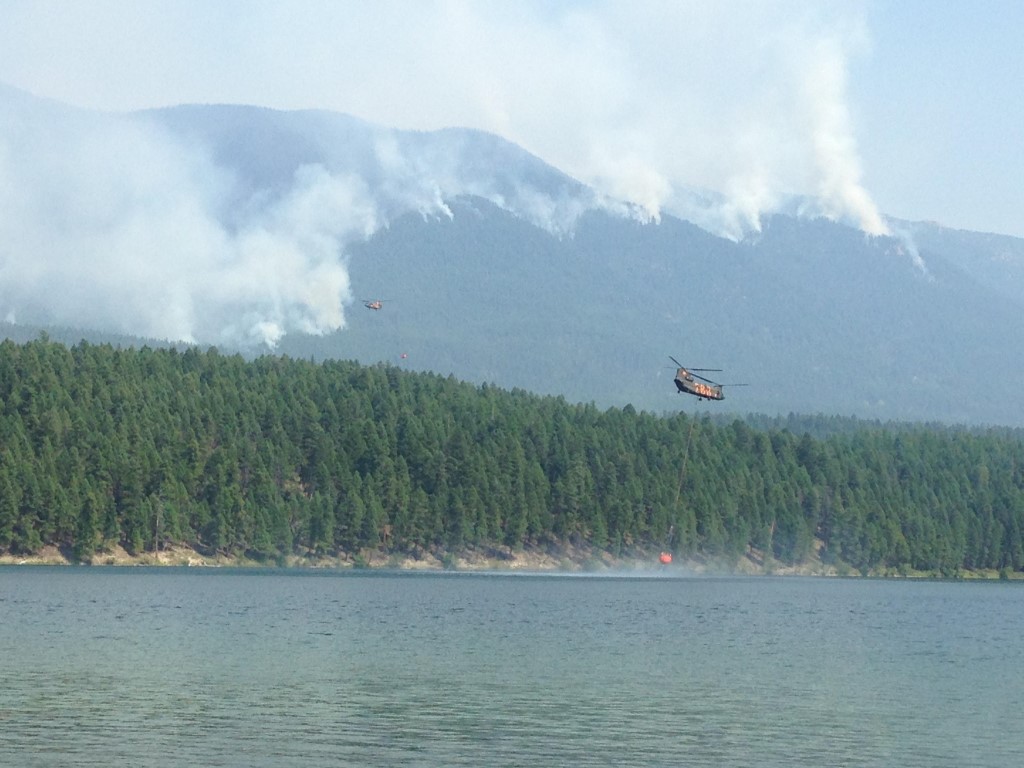From last Friday’s official press release, here’s the latest on fires in Glacier Park, as well as backcountry and campground closures . . .
Afternoon Update – Multiple Fires in Park Following Storm
Fire personnel conducted a detection flight over the park midday today.
Three fires were confirmed following yesterday afternoon’s storm.
The Sprague Fire is currently estimated at 10 acres. A Type 1 and Type 2 helicopter are being used to drop water on this priority fire. Heli- rappel crews have been inserted to support fire suppression activities, and additional crews will be responding this afternoon.
The Rogers Fire is currently estimated at two acres, though little to no smoke was seen on the fire during the overflight.
A new start was detected near Howe Lake that is estimated at less than .1 acre.
Air resources working on the Sprague Fire will assist with the Rogers and Howe Lake fires as available. Additional field personnel will also assist from the ground. Helicopters dropped water on the Rogers Fire yesterday while also responding to the Vaught Fire.
No new fire activity was detected for the Vaught Fire or for previous smoke reports on Apgar Mountain or in the Nyack area, however there was low visibility in the Nyack area due to fog. Closures will remain in effect for all of these areas while the park continues to monitor conditions.
The response team will conduct another detection flight later this afternoon and will release an update with flight findings, overnight fire behavior, and an update on closures in the morning.
Continue reading Multiple fires in Glacier Park following storm; some trail and backcountry closures




